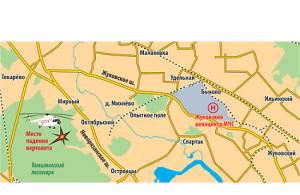Brick stone is one of the most versatile and necessary materials in construction. It is distinguished by high quality, reliability, durability and functionality. This is the merit of modern technology. Most often, non-firing or plastic is used. The result is optimal performance and long service life.
Information will become necessary in cases where the prospective load on the foundation is calculated to select a foundation.
Classification is carried out according to:
- I see. Based on this, red or ceramic and silicate options are distinguished.
- Purpose. Includes refractory or fireclay, facing or facing, working and clinker variations.
- Size. Dimensions are double, single or one and a half.
- Form. It can be solid or hollow, that is, slotted.
The working units do not have an attractive appearance, but are quite durable and reliable.
The main advantage of the facing block is its aesthetics, which allows you to create an interesting exterior.
The clinker type of brick allows you to add originality and color to the building, and the fireproof material is used to organize a fireplace or bathhouse.
How to determine the mass of silicate cyprich?
To find out the weight of a cube of material, you need to decide on the preferred type. One of the most popular is silicate. Each unit weighs an average of three kilograms, seven hundred grams. The quantity will be 513 pieces. Weight reaches 1900 kilograms. Quite often, sales are carried out using pallets. Each of them includes from two hundred to three hundred and eighty pieces. Based on this, the total weight can vary from 740 to 1410 kilograms.
It is important to remember that the mass of the silicate species directly depends on its dimensions and shape. The one-and-a-half full-bodied version reaches from 4.2 to 5 kilograms, the single hollow one – 3.2, and the one-and-a-half – 3.7. To find out the exact weight, you need to multiply the number of pieces per cube by the weight of one unit.
How to determine the mass of a ceramic material?
To find out how much a cube of ceramic brick weighs, you need to determine the dimensions,  which will be used in work. If you prefer a full-bodied form, the mass will be:
which will be used in work. If you prefer a full-bodied form, the mass will be:
- 3.5 kg for single.
- On average 4.1 kg for one and a half.
- About 6.9 for a double.
It is worth knowing that a single one has up to 513 pieces in each cubic meter. The total weight in this case reaches 1700 kg. One and a half - 379 pieces. They reach 1550 kg. There are about 242 pieces in a double cube. It weighs up to 1600 kg.
E If for your purposes you need a hollow type of ceramic brick, then the values will be as follows:
- 2.5 kg in one single and about 1200 kg in its cube.
- About 3 kg one and a half or 1200 in one cube.
- 4.7 kg in one double and 1000-1200 kg in its cube.
If you need a facing type, then the weight of a single unit will be 1.5 kg, and a one-and-a-half unit will be 3 kg. The cube of the first option contains 700-800 kg, and the second – 1000-1600 kg.
It is not difficult to determine how much a cube of brick weighs. It is enough to choose its type, shape and dimensions. It is important to carry out the calculation correctly to eliminate possible errors. The information will become necessary for drawing up construction estimates and determining the amount of material for a specific building.
One of the common materials for the construction of walls (partitions) is brick.
When carrying out construction work, it is imperative to take into account the specific gravity of the brickwork to calculate the load effects on the foundation.
Loads must always be taken into account. The integrity of the original building and the safety of the premises as a whole largely depend on this.
Masonry made of silicate, red brick
 The mass of red brick varies from 3.5 to 3.8 kg
The mass of red brick varies from 3.5 to 3.8 kg During construction, red (aka ceramic) or silicate (white) types are used. The first is based on clay, the second is lime and sand. They are available in different sizes and shapes. It turns out that 1 m3 of brickwork will contain an unequal number of units of this building material. Accordingly, the mass will differ.
The production of red brick from different types of clay is carried out by firing it in special kilns. With high strength, it has good thermal insulation properties. The weight of one of its pieces ranges from 3.5-3.8 kg.
 Sand-lime brick is heavier than red
Sand-lime brick is heavier than red To reduce it, manufacturers produce a hollow version weighing an average of 2.5 kg per unit. Due to the presence of cavities, a more voluminous hollow one will weigh the same as a full-bodied one.
The heavy silicate version has good thermal insulation properties. It is more durable than red. At the same time, the average weight for a full-bodied one is 3.7 kg, and for a hollow one it is 3.2 kg. The mass characteristics of the more voluminous version are comparable to the full-bodied type.
According to the functions performed, the following are distinguished:
- workers;
- facing.
Calculations
 One cubic meter of mortar is enough for a cubic meter of brick
One cubic meter of mortar is enough for a cubic meter of brick It is necessary to calculate the amount of brick needed when performing work by calculating the volume of the final structure. Based on it, purchase working material.
Everything is not limited to the weight of the bricks: the thickness and number of connecting seams and the characteristics of the bonding mortar are additionally taken into account. To fill voids, more mortar is used than for a solid type.
When performing calculations, it is advisable to focus on measuring the mass indicator of a cubic meter of masonry. For more information on brickwork calculations, watch this useful video:
During construction, one cube of mortar can lay out up to 4 cubes of brick. The specific average weight of the masonry ranges from 1500 to 2000 kg/m3.
In order not to independently calculate the weight of the full brickwork of 1 m3, it is advisable to use the table.
Brickwork is one of four types of artificial stone masonry, along with small block, ceramic and mixed. This type of masonry is one of the most popular and is used everywhere. Using this masonry, construction work is carried out on the construction of building walls, supports for bridges, remelting, and the like.
The popularity is due to the ease of implementation and versatility of work. This technology first became known at least from the 8th millennium BC. This is confirmed by excavations of the village of Mehrgarh in Pakistan. Even then they understood that this method was one of the best for construction work.
Table of specific gravity of brickwork
Below is a detailed table to simplify the necessary calculations, including such a parameter as the weight of the brickwork.
| Material | Specific gravity (g/cm3) | Weight 1 m3 (kg) |
| Average value of all types of bricks | 1,7 - 1,9 | 1700 - 1900 |
| Single Ceramic Solid Clay Red Brick | 1,7 - 1,8 | 1700 - 1800 |
| One and a half ceramic solid clay red brick | 1,6 - 1,7 | 1600 - 1700 |
| Double Ceramic Solid Clay Red Brick | 1,5 - 1,6 | 1500 - 1600 |
| Single Ceramic Hollow Clay Red Brick | 1,3 - 1,4 | 1300 - 1400 |
| One and a half ceramic hollow clay red brick | 1,27 - 1,3 | 1270 - 1300 |
| Double Ceramic Hollow Clay Red Brick | 1,1 - 1,27 | 1100 - 1270 |
| Single Ceramic Hollow Clay Red Brick Cladding | 1,2 - 1,7 | 1200 - 1700 |
| One and a half ceramic hollow clay red facing brick | 0,9 - 1,05 | 900 - 1050 |
| Single silicate solid white brick | 1,8 | 1800 |
| One and a half silicate solid white brick | 1,7 - 1,8 | 1700 - 1800 |
| Single silicate hollow white brick | 1,7 | 1700 |
| One and a half silicate hollow white brick | 1,5 | 1500 |
| Double silicate hollow white brick | 1,4 | 1400 |
| Single silicate hollow white brick facing | 1,5 - 1,7 | 1500 - 1700 |
| One and a half silicate hollow white brick facing | 1,3 - 1,5 | 1300 - 1500 |
| Single solid fireclay brick | 1,7 - 1,9 | 1700 - 1900 |
Specific Gravity Calculations
In order to calculate the necessary parameters. To begin with, you need to define the concept itself. So, specific gravity is the quantitative ratio of weight to the occupied volume of the desired substance or material. Such calculations are carried out using the following formula: y=p*g, where y is the specific gravity, p is the density, g is the acceleration of gravity, which in normal cases is a constant and equals 9.81 m/s*s. The result is measured in Newtons, which are divided by cubic meter (N/m3). To convert the resulting value to the SI system, you need to multiply it by 0.102. Approximate values of such a parameter as the specific gravity of brickwork are presented in the table above.
Density is the mass of the desired substance or material, measured in kilograms, which fits in a cubic meter. This parameter often depends on many different factors, such as temperature. The average values of such a parameter as the density of brickwork range from 900 to 2000 kg/m3.
How much does 1 cube of brickwork weigh, the weight of 1 m3 of brickwork. The number of kilograms in 1 cubic meter of a brick wall, the number of tons in 1 cubic meter of a brick wall, kg in 1 m3 of a brick wall. Volumetric density of brickwork and specific gravity of a brick wall.What do we want to learn today? How much does 1 cube of brickwork weigh, what is the weight of 1 m3 of brickwork? No problem, you can find out the number of kilograms or the number of tons at once, the mass (weight of one cubic meter, weight of one cube, weight of one cubic meter, weight of 1 m3) is indicated in Table 1. If anyone is interested, you can skim the small text below and read some clarifications. How is the amount of substance, material, liquid or gas we need measured? Except for those cases when it is possible to reduce the calculation of the required quantity to the counting of goods, products, elements in pieces (piece counting), it is easiest for us to determine the required quantity based on volume and weight (mass). In everyday life, the most common unit of volume measurement for us is 1 liter. However, the number of liters suitable for household calculations is not always an applicable method for determining the volume for business activities. In addition, liters in our country have not become a generally accepted “production” and trade unit for measuring volume. One cubic meter, or in its abbreviated version - one cube, turned out to be a fairly convenient and popular unit of volume for practical use. We are accustomed to measuring almost all substances, liquids, materials and even gases in cubic meters. It's really convenient. After all, their costs, prices, rates, consumption rates, tariffs, supply contracts are almost always tied to cubic meters (cubes), and much less often to liters. No less important for practical activities is knowledge of not only the volume, but also the weight (mass) of the substance occupying this volume: in this case we are talking about how much 1 cubic meter weighs (1 cubic meter, 1 cubic meter, 1 m3). Knowing mass and volume gives us a fairly complete idea of quantity. Site visitors, when asking how much 1 cube weighs, often indicate specific units of mass in which they would like to know the answer to the question. As we noticed, most often they want to know the weight of 1 cube (1 cubic meter, 1 cubic meter, 1 m3) in kilograms (kg) or tons (t). Essentially, you need kg/m3 or t/m3. These are closely related units that define quantity. In principle, a fairly simple independent conversion of weight (mass) from tons to kilograms and vice versa is possible: from kilograms to tons. However, as practice has shown, for most site visitors, a more convenient option would be to immediately find out how many kilograms 1 cubic (1 m3) of brickwork weighs or how many tons 1 cubic (1 m3) of brickwork weighs, without converting kilograms into tons or vice versa - quantities tons to kilograms per cubic meter (one cubic meter, one cubic meter, one m3). Therefore, in Table 1 we indicated how much 1 cubic meter (1 cubic meter, 1 cubic meter) weighs in kilograms (kg) and tons (t). Choose the table column that you need yourself. By the way, when we ask how much 1 cube (1 m3) weighs, we mean mass - the number of kilograms or the number of tons. However, from a physical point of view, we are interested in density or specific gravity. The mass of a unit volume or the amount of substance contained in a unit volume is bulk density or specific gravity. In this case bulk density and specific gravity of brickwork. Density and specific gravity in physics are usually measured not in kg/m3 or tons/m3, but in grams per cubic centimeter: g/cm3. Therefore, in Table 1, specific gravity and density (synonyms) are indicated in grams per cubic centimeter (g/cm3)
Table 1. How much does 1 cube of brickwork weigh, the weight of 1 m3 of brickwork. Bulk density of a brick wall and specific gravity in g/cm3. How many kilograms are in a cube of a brick wall, tons in 1 cubic meter, kg in 1 cubic meter of a brick wall, tons in 1 m3. Additionally, how much: 1 liter weighs, 1 bucket weighs, liters in one cube of a brick wall.
Every specialist knows that the strength of a building, safety and service life depend on the characteristics of the building materials used in construction, as well as the size and shape of the structure. The parameters of the foundation, load-bearing walls, and partitions are calculated based on the standard weight of brickwork with a volume of 1 m3. It must be remembered that excessive strengthening of the parts of the structure will only lead to an increase in load and waste of material.
Basic calculation rules
How to calculate the weight of brickwork?
(function(w, d, n, s, t) ( w[n] = w[n] || ; w[n].push(function() ( Ya.Context.AdvManager.render(( blockId: "R-A -388243-5", renderTo: "yandex_rtb_R-A-388243-5", async: true )); )); t = d.getElementsByTagName("script"); s = d.createElement("script"); s .type = "text/javascript"; s.src = "//an.yandex.ru/system/context.js"; s.async = true; , this.document, "yandexContextAsyncCallbacks");
The calculated weight of 1m3 of brickwork is made based on the data provided by the manufacturer and taking into account tolerances. Processing modes and raw materials used in the production process do not always meet technological requirements. A certain interval of deviations provided for by SNiP is called tolerance. Hence the conclusion follows: the volumetric weight of brickwork fluctuates within clearly established limits.
(function(w, d, n, s, t) ( w[n] = w[n] || ; w[n].push(function() ( Ya.Context.AdvManager.render(( blockId: "R-A -388243-6", renderTo: "yandex_rtb_R-A-388243-6", async: true )); )); t = d.getElementsByTagName("script"); s = d.createElement("script"); s .type = "text/javascript"; s.src = "//an.yandex.ru/system/context.js"; s.async = true; , this.document, "yandexContextAsyncCallbacks");
When calculating the specific gravity of brickwork, it is necessary to remember that individual bricks are bonded together with cement mortar. The mass of the composition, which also has some deviations, must be taken into account when calculating. Various factors influence the thickness and density of the ligament.
The influence of the type of brick on the weight of the masonry
When making bricks, various raw materials are used: clay, sand, etc. Raw materials have different quality characteristics, and various technological methods are used in production. All these factors have a direct impact on the parameters of the building material.
Ordinary ceramic bricks are made from clay by firing in autoclave ovens at certain temperature conditions. When choosing a material, you should pay attention to the fact that the weight of a cube of brickwork made of ceramic brick varies from 1.7 to 1.9 tons. The weight of masonry made from hollow and solid stone will be different.
Sand-lime brick is made from purified quarry sand, quicklime, and water. The production process involves adding special additives and auxiliary elements to the composition, increasing its strength.
(function(w, d, n, s, t) ( w[n] = w[n] || ; w[n].push(function() ( Ya.Context.AdvManager.render(( blockId: "R-A -388243-8", renderTo: "yandex_rtb_R-A-388243-8", async: true )); )); t = d.getElementsByTagName("script"); s = d.createElement("script"); s .type = "text/javascript"; s.src = "//an.yandex.ru/system/context.js"; s.async = true; , this.document, "yandexContextAsyncCallbacks");
Today, double sand-lime brick M150 is popular, the high quality of which is determined by:
- composition: quartz sand, burnt lime, process water, dyes and modifiers;
- manufacturing technology: molding, autoclave drying at strictly established temperature and humidity;
- pressing.
The weight of 1 m3 of brickwork made of sand-lime brick, as well as its other parameters, depend on the technical characteristics of the material and the skill of the mason who regulates the thickness of the binder mortar.
Calculation of foundation and foundation
The weight of a cube of brickwork is taken into account when determining the qualitative and quantitative characteristics of the foundation. The average indicator can be found in special tables. Don't forget about tolerances and amendments. The most accurate calculation is done using special programs that speed up the calculation process. It is important to set the parameters correctly, following the instructions and requirements.
The maximum weight of brickwork of 1 m2 must be determined to ensure the strength and reliability of the load-bearing foundations. The accuracy of the indicator depends on the correctly selected grade of material for structures experiencing maximum load: plinths, lower tier.
It is important to know that according to existing accounting methods, the average weight of a cube of brickwork is 1.5 tons.
Home calculations
To build structures with your own hands, you can simplify the calculations a little. To do this, you should know the average weight of the brick, how many pieces will be used, and the volume of binder consumption. An ordinary brick, standard size 250x120x65 mm, weighs 4.3 kg, and depends on whether the material is solid or hollow. You can find out the quantity as follows: the height of the structure, divided by the height of the brick (65 mm) plus jointing (approximately 10 mm) and multiplied by the number in one row. The resulting figure should be multiplied by the weight of the brick. For example, the height of the structure is 2 m; 10 bricks were used to lay one row.
Based on this: (2000/(65+10)*10)*4.3. We get the average weight of the brickwork equal to 1147 kg.
(function(w, d, n, s, t) ( w[n] = w[n] || ; w[n].push(function() ( Ya.Context.AdvManager.render(( blockId: "R-A -388243-7", renderTo: "yandex_rtb_R-A-388243-7", async: true )); )); t = d.getElementsByTagName("script"); s = d.createElement("script"); s .type = "text/javascript"; s.src = "//an.yandex.ru/system/context.js"; s.async = true; , this.document, "yandexContextAsyncCallbacks");
(function(w, d, n, s, t) ( w[n] = w[n] || ; w[n].push(function() ( Ya.Context.AdvManager.render(( blockId: "R-A -388243-1", renderTo: "yandex_rtb_R-A-388243-1", async: true )); )); t = d.getElementsByTagName("script"); s = d.createElement("script"); s .type = "text/javascript"; s.src = "//an.yandex.ru/system/context.js"; s.async = true; , this.document, "yandexContextAsyncCallbacks");








